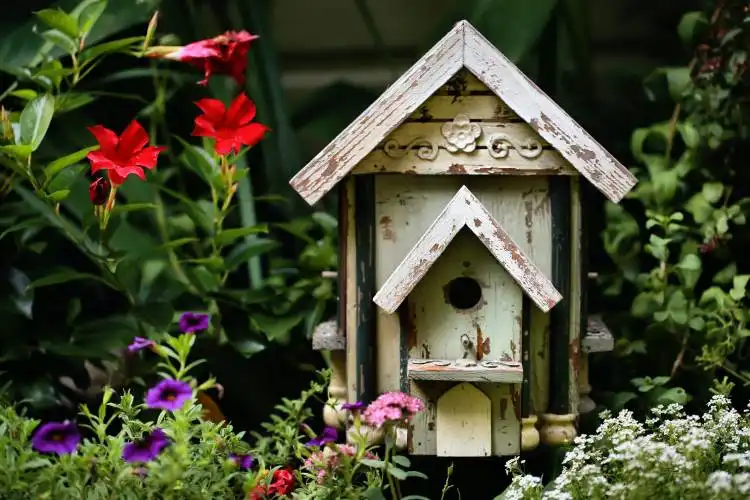Start a Dried Flower Business
Harness Nature's Immortal Beauty: The Lure of the Dried Flower Business
| Updated


DRIED FLOWER BUSINESS
Put on your botanic hat and dive into the world of the dried flower business, where beauty doesn't wilt away. This entrepreneurial path is all about preserving flowers intricately, for those who like their blossoms ever-lasting. Perfect for a variety of purposes, from home decoration to creative arts to events, your product is a sublime blend of nature's beauty and timeless charm. In short, a dried flower business entails sourcing, drying, and selling a selection of beautiful flowers that gave up on time, but not on grace.
Jump to Business Plan
RELATED BUSINESS IDEAS
Browse ALL Arts & Crafts Business Ideas
Discover Your Perfect Domain
Unlock the door to your online success with our hand-picked selection of premium domain names. Whether you're starting a new venture or rebranding an existing one, the right domain can set the tone for your digital presence. Browse through our curated list, each with its unique potential to enhance your brand's visibility and credibility.
DRIED FLOWER MINI BUSINESS PLAN
This a quick reality check to help you identify the strengths and weaknesses of your business concept before you dive in.
Expected Percent Margin:
- Gross Margin: Around 45-55% depending on the cost of flower procurement, drying process, and packaging.
- Net Profit Margin: Typically 10-30%, depending on overhead and operating costs.
Earnings Expectations:
- Daily Earnings: If you sell 20 bouquets per day (average price $25), your daily sale could be around $500.
- Weekly Earnings: With consistent sales, weekly earnings could reach $3,500.
- Monthly Earnings: On a monthly basis, you could make around $14,000-$15,000 (considering not every month is a 5-week month).
- Annual Earnings: Based on the monthly earnings, annual sales could hover around $168,000 - $180,000.
Actions to Hit Those Numbers:
Sourcing:
- Flower Procurement: Establish strong ties with local flower growers to get fresh flowers at a lower cost.
- Drying Process: Invest in a good dehydrating facility or space for drying flowers with minimal quality loss.
Marketing and Sales:
- Online Sales: Create a user-friendly online website and use SEO techniques to bring traffic to your page.
- Social Media Marketing: Regular posts and ads on Instagram and Facebook, platforms that have the right target audience for this business.
- Local Art & Craft Shows: Participate in local festivals, craft shows, and farmer's markets.
Packaging and Delivery:
- Quality Packaging: Ensure that the packaging is robust enough to prevent any damage to the product while also being aesthetically pleasing.
- Delivery Service: Provide reliable delivery service, and if possible, consider offering free local delivery.
Operations:
- Product Range: You could offer a range of products such as whole bouquets, single-stem flowers, DIY bouquet kits, and customized orders.
- Operational Efficiency: Find ways to streamline the drying and packaging process for maximum efficiency.
Again, these are approximations that can vary based on location, the competitive landscape, specific pricing strategies, and the effectiveness of your marketing. Always seek personalized advice from a business consultant or financial advisor.
NOT WHAT YOU HAD IN MIND? Here are more ideas



Browse ALL Arts & Crafts Business Ideas
Grab Your Business Website Name
Before you get caught up in the whirlwind of setting up your business, invest in a domain name. It's a small but significant step that lays the foundation for your brand and makes it easier for customers to find and trust you. Just like you wouldn't build a house without securing the land first, don't build a business without securing your domain name.
"Why? Can't that wait?" Here's why it shouldn't
Step 1: Determine if a Dried Flower Business is the Right Endeavor
Breakdown of Startup Expenses
When starting a dried flower business, it is important to understand the costs associated with getting the business off the ground. This includes the cost of the flowers, supplies, and any equipment needed. Additionally, there may be costs associated with renting a space, obtaining permits, and hiring employees. It is important to research the costs associated with each of these items and create a budget for the startup of the business.
Breakdown of Ongoing Expenses
After the business is up and running, there are ongoing expenses that must be taken into account. These include the cost of purchasing flowers, supplies, and any other materials needed to keep the business running. Additionally, there may be costs associated with marketing, advertising, and other business operations. It is important to understand these costs and create a budget for the ongoing expenses of the business.
Examples of Ways to Make Money
Once the business is up and running, there are several ways to make money. One way is to sell the dried flowers directly to customers. Additionally, the business can create arrangements and bouquets to sell. Another way to make money is to offer classes or workshops on how to dry and arrange flowers. Finally, the business can offer services such as event decoration or custom arrangements for weddings and other special occasions. It is important to understand the different ways to make money and create a plan to maximize profits.
Step 2: Name the Business
When it comes to naming a business, it is important to come up with a name that is unique and memorable. It should be something that will stand out and be easy to remember. Additionally, it should be something that reflects the nature of the business, such as “Dried Flower Boutique” or “Dried Flower Designs”. It is also important to make sure that the name is not already taken by another business, so it is important to do some research to make sure that the name is not already in use.
When coming up with a name, it is also important to consider the domain name. It is best to try and find a domain name that is the same as the business name, as this will make it easier for customers to find the business online. Additionally, it is important to make sure that the domain name is available, as this will be necessary for setting up a website and other online presence.
Once a name has been chosen, it is important to make sure that the name is trademarked and registered with the local government. This will help to protect the business from any potential legal issues. Additionally, it is important to make sure that the name is registered with the local chamber of commerce, as this will help to ensure that the business is listed in the local business directory.
Finally, it is important to make sure that the name is used consistently across all marketing materials, such as business cards, flyers, and website. This will help to ensure that customers can easily recognize the business and remember the name.
Step 3: Create a Business Plan
When creating a business plan, it is important to include a detailed breakdown of startup expenses, ongoing expenses, and potential revenue streams. This will help you determine if the business is feasible and if it is worth pursuing. Additionally, it will help you secure financing and attract potential investors. Your business plan should include a detailed description of the business, a market analysis, a competitive analysis, a marketing plan, an operational plan, and a financial plan.
How to Write a Business Plan
Writing a business plan can seem like a daunting task, but it doesn't have to be. Start by researching other successful business plans in your industry and use them as a template. Make sure to include all the necessary information and be as detailed as possible. Additionally, make sure to include realistic goals and objectives, and be sure to explain how you plan to achieve them. Finally, make sure to include a timeline for when you plan to launch the business and when you plan to reach certain milestones.
Step 4: Obtain the Necessary Licenses and Permits
The fourth step in starting a dried flower business is to obtain the necessary licenses and permits. Before applying for any licenses or permits, it is important to research the local requirements. Depending on the state or country, there may be different requirements for businesses. For example, some states may require a business license, while others may require a special permit for selling dried flowers. It is important to research the local requirements to ensure that the business is compliant with all laws and regulations.
Apply for Licenses and Permits
Once the necessary research has been done, the next step is to apply for the licenses and permits. Depending on the local requirements, this may involve filling out an application and submitting it to the local government. The application process may also involve paying a fee and providing proof of insurance. Once the application is approved, the business will be able to legally operate.
Keep Records of Licenses and Permits
It is important to keep records of all licenses and permits that have been obtained. These records should be kept in a safe place and should be updated regularly. This will ensure that the business is always in compliance with the local laws and regulations. Additionally, it is important to keep track of any changes in the local laws or regulations so that the business can remain compliant.
Renew Licenses and Permits
Finally, it is important to renew any licenses and permits that have been obtained. Depending on the local requirements, this may need to be done annually or bi-annually. It is important to keep track of the renewal dates so that the business can remain compliant with the local laws and regulations.
Step 5: Find a Supplier
When researching potential suppliers, it is important to consider factors such as cost, quality, and availability. It is also important to research the reputation of the supplier, as well as any reviews from customers. Additionally, it is important to consider the supplier’s shipping policies and delivery times. It is also recommended to contact the supplier directly to ask any questions or to discuss any potential deals.
Place an Order
Once you have identified a supplier, it is time to place an order. When placing an order, it is important to consider the quantity of the order and the cost. Additionally, it is important to consider the delivery time and any additional costs associated with the order. It is also important to consider any payment terms and any discounts that may be available.
Receive the Order
Once the order is placed, it is important to inspect the order when it arrives. It is important to check the quality of the flowers and to ensure that the order is correct. Additionally, it is important to check the delivery time and to ensure that the order was received in a timely manner. If there are any issues with the order, it is important to contact the supplier immediately.
Store the Flowers
Once the order is received, it is important to store the flowers in a cool, dry place. It is also important to keep the flowers away from direct sunlight and to keep them away from any moisture. Additionally, it is important to keep the flowers away from any pests or other animals. It is also important to check the flowers periodically to ensure that they are in good condition.
Step 6: Market the Business
Create a Website
Creating a website is an essential step in marketing a business. It is important to create a website that is both visually appealing and user-friendly. The website should include information about the business, such as what products are offered, contact information, and any other relevant information. It should also include a blog or news section, so customers can stay up to date with the business. Additionally, it is important to include a shopping cart so customers can purchase products directly from the website.
Utilize Social Media
Social media is a great way to market a business. It is important to create accounts on the most popular social media platforms, such as Facebook, Twitter, and Instagram. On these accounts, it is important to post regularly about the business, such as new products, promotions, and events. Additionally, it is important to engage with customers on social media, responding to comments and messages in a timely manner. It is also important to use hashtags to increase visibility and reach more potential customers.
Step 7: Set Up an Online Store
Setting up an online store is a great way to reach customers beyond your local area. There are many platforms available for setting up an online store, such as Shopify, BigCommerce, and Squarespace. Each platform has different features and pricing, so it is important to research each one to determine which is the best fit for your business. Additionally, some platforms offer services such as website design and marketing, which can be beneficial for those who are not familiar with web design.
Payment Processing
When setting up an online store, it is important to consider how customers will pay for their purchases. Payment processing services such as PayPal and Stripe are popular options for online stores. These services allow customers to pay with their credit cards and also provide additional security for the store owner. Additionally, some platforms offer their own payment processing services, which can be beneficial for those who are not familiar with payment processing.
Shipping Options
When setting up an online store, it is important to consider the shipping options available. Many online stores offer free shipping or flat rate shipping, which can be beneficial for customers. Additionally, it is important to consider the cost of shipping, as this can affect the profitability of the business. It is also important to consider the speed of shipping, as customers may be more likely to purchase from a store that offers faster shipping.
Marketing
Once the online store is set up, it is important to consider how to market the business. There are many ways to market an online store, such as social media, email marketing, and search engine optimization. Additionally, it is important to consider how to make the store stand out from the competition. This can be done by offering unique products, providing excellent customer service, and offering discounts or promotions.
Step 8: Develop a Pricing Strategy
When developing a pricing strategy for a dried flower business, it is important to consider the costs associated with the business. This includes the cost of the flowers, the cost of packaging, and the cost of shipping. It is also important to consider the prices of competitors in the market. Researching competitors’ prices can help to determine the best pricing strategy for the business.
Set Competitive Prices
Once the costs and competitors’ prices have been considered, it is important to set competitive prices for the business. This means setting prices that are competitive with the market, but also prices that will generate a profit for the business. It is important to consider the cost of the product and the cost of labor when setting prices.
Offer Discounts
Offering discounts can be a great way to attract customers to the business. Discounts can be offered for bulk orders, for customers who have been loyal to the business, or for customers who have referred other customers. Discounts can be a great way to increase sales and attract new customers.
Monitor Prices
It is important to monitor prices regularly to ensure that the business is competitive in the market. Prices should be monitored to ensure that the business is not pricing itself out of the market. Prices should also be monitored to ensure that the business is making a profit.
Step 9: Track Finances
In order to stay organized and on top of your finances, it is important to invest in accounting software. This will help you keep track of your income, expenses, and profits. It will also help you create financial statements, which will be important for filing taxes and making sure you are staying within the legal requirements of running a business. Additionally, accounting software can help you create invoices and track payments from customers.
Budget
Creating a budget is essential for any business. It will help you plan for the future and ensure that you are staying within your means. When creating a budget, it is important to factor in all of your expenses, including rent, utilities, and payroll. Additionally, you should set aside money for marketing and advertising, as well as any other unexpected costs that may arise.
Profit and Loss Statements
Creating a profit and loss statement is a great way to track your financial progress. This statement will show you how much money you are making and spending, and will help you determine if your business is making a profit. Additionally, it will help you identify areas where you can cut costs or increase revenue.
Tax Preparation
It is important to stay up to date on your taxes and make sure you are filing them correctly. You should consult with a tax professional to make sure you are taking advantage of all available deductions and credits. Additionally, you should keep track of all of your expenses, as many of them can be used to reduce your tax burden.
EXPLORE MORE CATEGORIES
Browse ALL Business Idea Categories
TAKE THE NEXT STEPS










